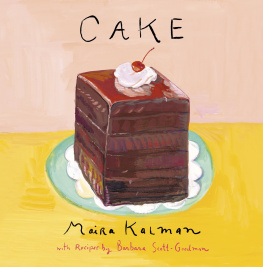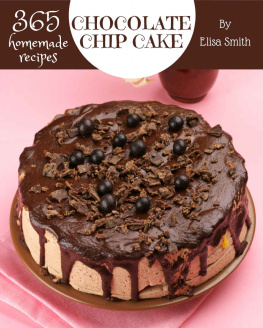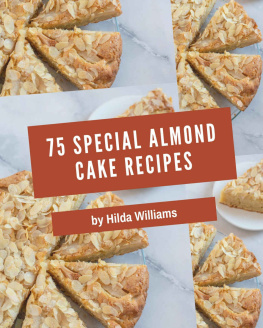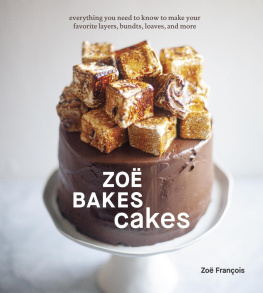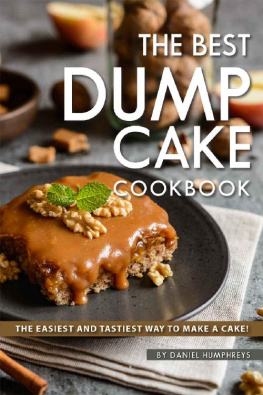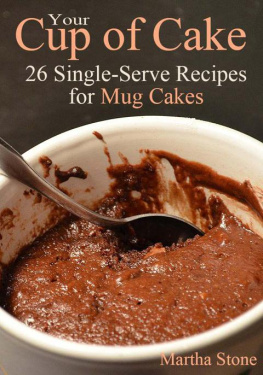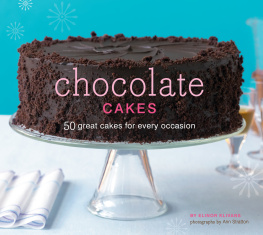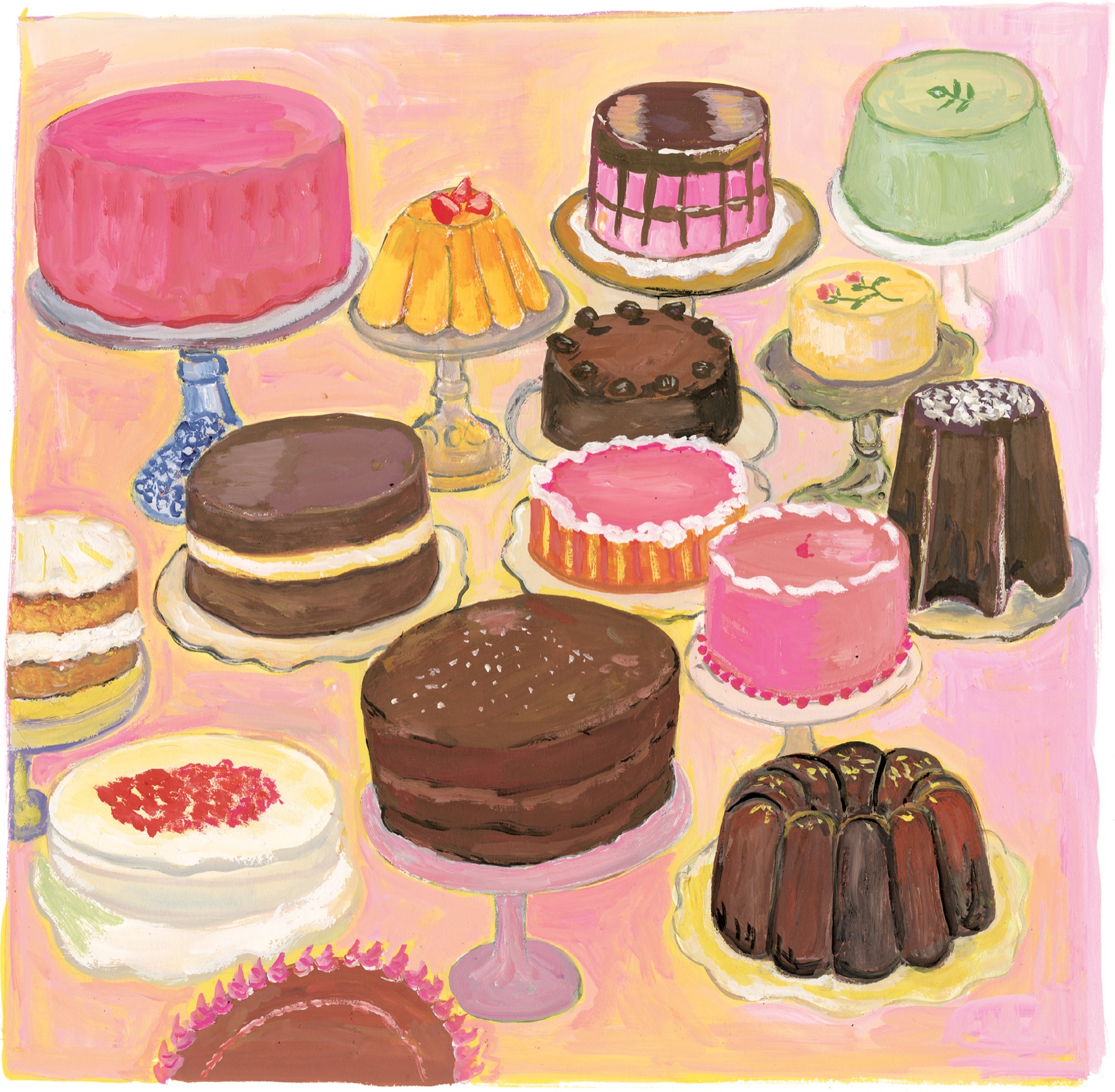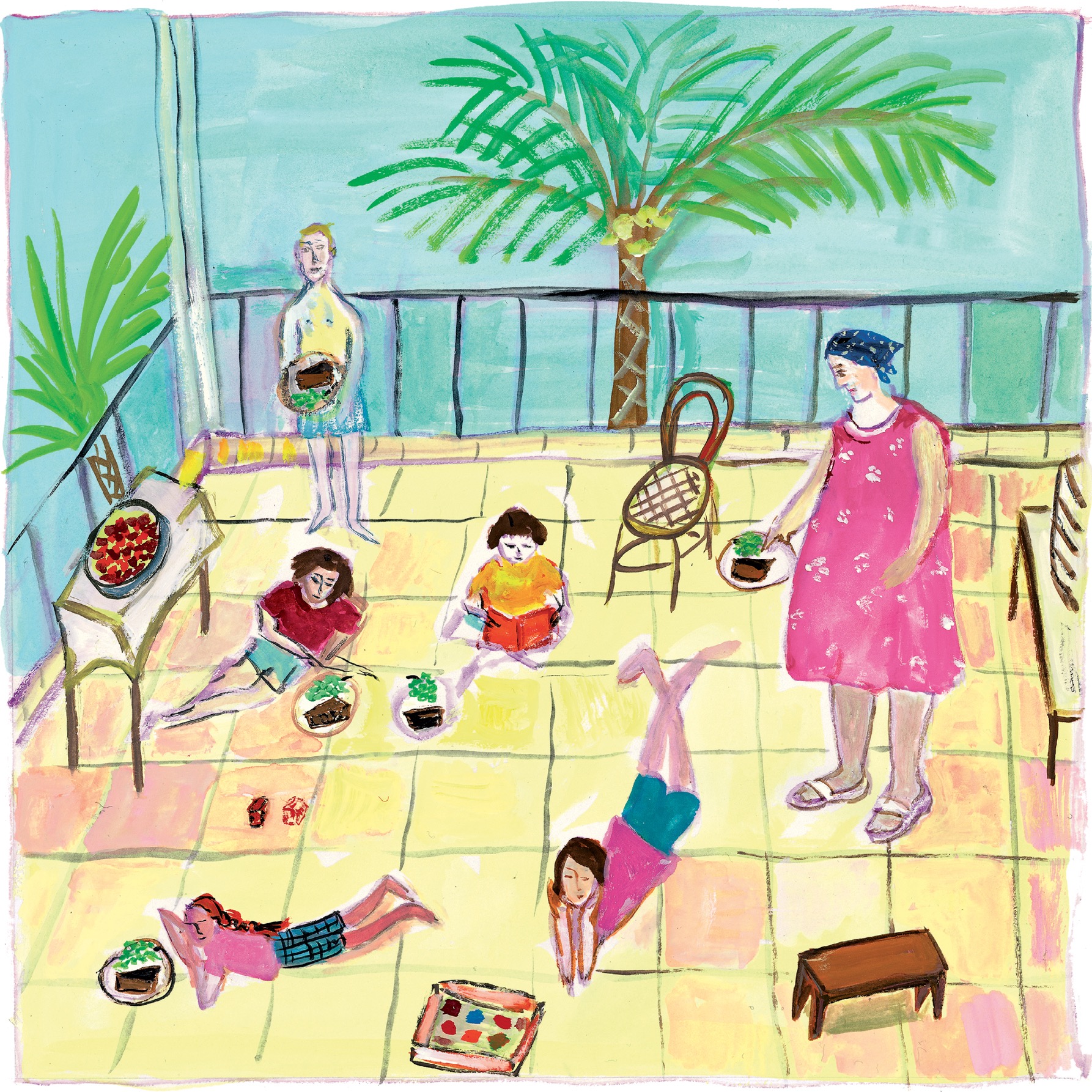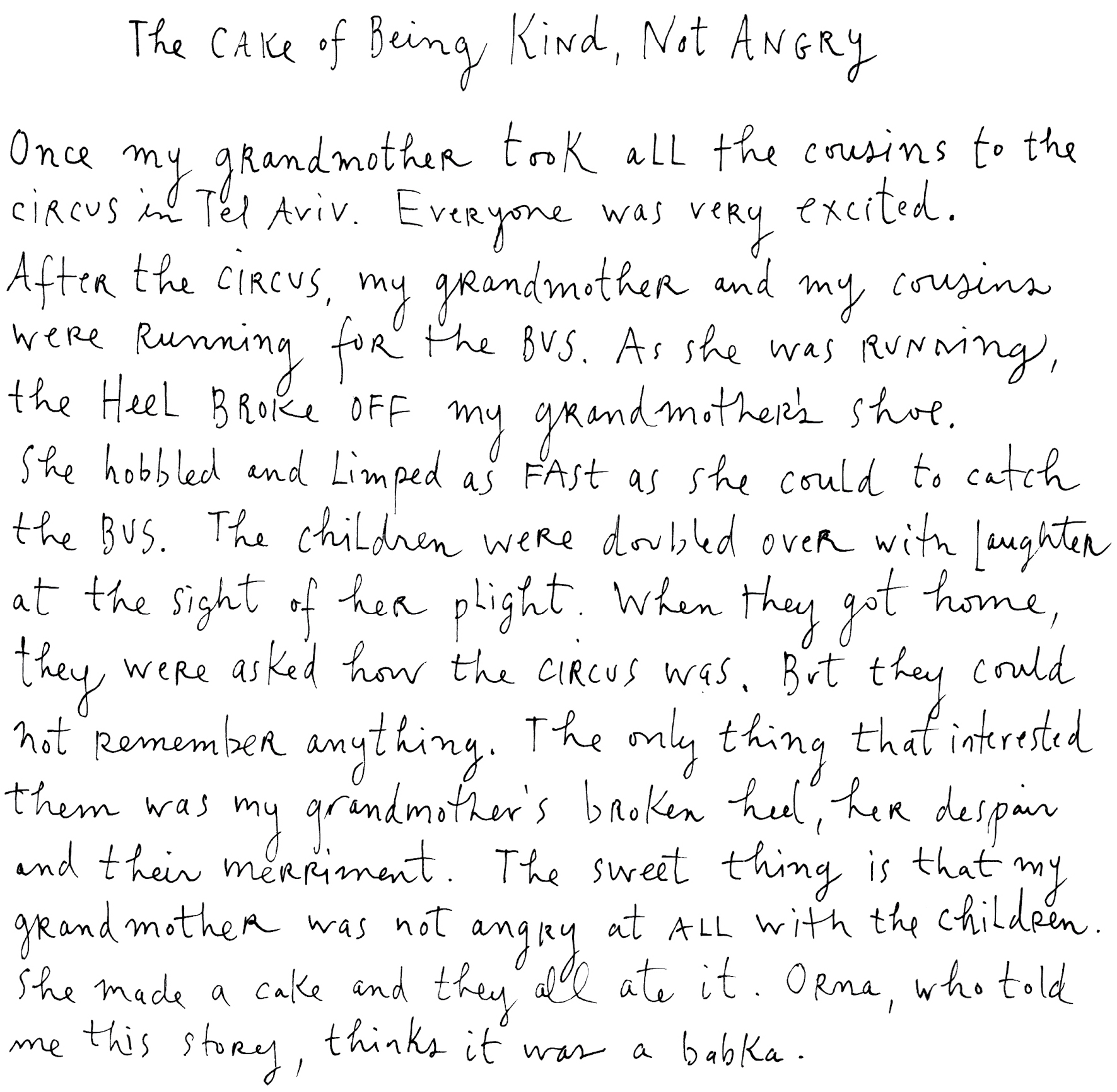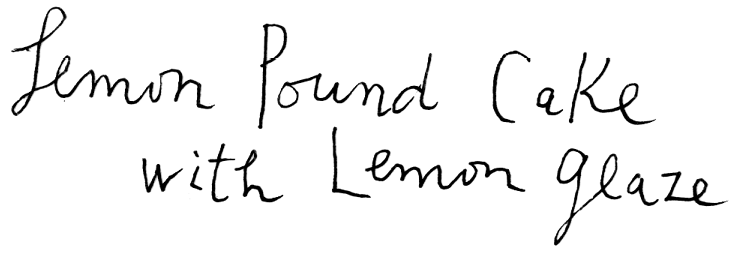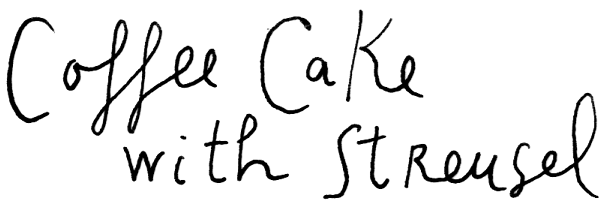Most of us love cake and take great comfort and delight in eating it. In addition to being a delicious treat, cake evokes powerful memories from our pasts. We remember cakes from landmark occasions like childhood birthday parties, holiday meals, weddings, and funerals. We recall the cakes we ate in bakeries and restaurants, the ones we ate at home or while traveling. There are strong emotions and resonant stories that go with cakes. I have baked many elaborate cakes for birthdays, dinner parties, and holidays, but my most memorable cake is a simple cinnamon-peach number that I threw together for a beach picnic many summers ago. I still remember that sunny afternoon, when my young daughters and I were sitting by the water and eating that juicy cake, like it was yesterday. Sweet memories indeed.
People think that cake is kind of a big deal, and it is. Serving cake for dessert can turn a simple dinner into an occasion, and nothing says Lets celebrate quite like it. It is often the pinnacle of a party. After the birthday kid makes a wish and blows out the candles on the cake or when the bride cuts the wedding cake, it signifies that, sadly or mercifully, the partys almost over.
When I gaze into a bakery window, I admire the cakes and confections baked by professional pastry chefs and master bakers. I am in awe of their craft, talent, and precision. But what I truly love are homemade cakesyou know, the ones where the layers are a little lopsided and the frosting looks like the kids or grandkids were helping out in the kitchen. I am crazy about tea cakes, pound cakes, and sheet cakes. These are simple treats to be savored with a cup of coffee or tea for an afternoon pick-me-up or packed into picnic baskets or lunch bags for a perfect little dessert.
Its really pretty easy to bake a cake. The ingredients are simpleflour, butter, sugar, and eggs. But like all good things, it takes a bit of time and attention. There are a few simple rules to follow, and I think the most important one is to take your time and avoid distraction while youre baking. Unlike making a soup or a stew, you cant leave it on the stove to simmer for a few hours and walk away. There is chemistry at work here. As for equipment, all you really need are a few roomy bowls, some cake pans, and measuring cups and spoons. A stand mixer is a good baking tool but not a necessary one. I use a hand mixer for all of my baking because while my small New York kitchen is long on experience, it is very short on space.
Heres another thing about baking cakes that seasoned baking pros and novices alike will agree on. Not all of them will be towering successes. Sometimes there is a good reason for thisyour measurements were off, you used baking soda instead of baking powder (guilty), or the timing was wrong. But sometimes there is no good reason for this and you just have to shrug it off and say, It wasnt my day to bake a cake.
Baking a cake is immensely satisfying. Its a simple pleasure that should not be taken lightly. Really, theres nothing better than to bring a lovely homemade cake to the table and say, I made this for you.
Welcome to Cake.
Barbara Scott-Goodman

Cake
3 cups unbleached all-purpose flour
2 teaspoons baking powder
teaspoon salt
pound (2 sticks) unsalted butter, at room temperature
2 cups sugar
4 large eggs, at room temperature
1 cup whole milk
Finely grated zest of 2 lemons
Glaze
cup sugar
cup fresh lemon juice
Everyone needs a good lemon cake recipe in his or her baking repertoire. Its the perfect thing to serve with coffee or tea, as well as for dessert with fresh fruit, and it tastes even better after a day or two or three. Be sure to glaze the cake while it is still warm.
This is adapted from the East 62nd Street Lemon Cake recipe that is featured in the cookbook Maida Heatters Cakes. The cake was created by Toni Evins, Heatters late daughter, who lived on East 62nd Street in Manhattan.
- Position an oven rack in the center of the oven and preheat the oven to 350F. Butter and flour a 10-inch Bundt pan and tap out the excess flour.
- To make the cake: Sift together the flour, baking powder, and salt and set aside.
- In a large bowl with an electric mixer on medium speed, beat the butter until soft. Add the sugar and beat until incorporated. Beat in the eggs one at a time, scraping the bowl as needed with a spatula.
- With the mixer on low, add the flour mixture alternately in three additions with the milk in two additions, beating only until incorporated. Stir in the lemon zest. Turn the batter into the prepared pan and gently level the top with a spatula.
- Bake for 1 hour and 5 to 10 minutes, or until a toothpick or cake tester inserted in the cake comes out clean. Let the cake cool in the pan for 5 minutes. Run a sharp thin knife around the inside of the pan and the tube, then cover with a wire rack and invert. Lift the pan from the cake, leaving it upside down. Place the rack over a large piece of foil or wax paper and prepare the glaze.
- To make the glaze: Mix the sugar and lemon juice together. Poke the top of the cake all over with a long wooden skewer. Pour the glaze over the top of the cake and let cool completely. It is best to wait a few hours (or even a day) before cutting the cake.
Makes one 10-inch tube cake; serves 12

